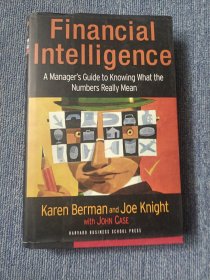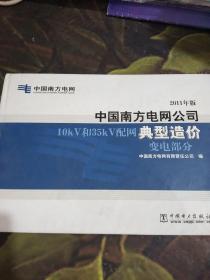
Financial Intelligence: A Manager's Guide to Knowing What the Numbers Really Mean
¥ 70 3.3折 ¥ 213.5 九品
仅1件
北京大兴
认证卖家担保交易快速发货售后保障
作者Karen(卡伦·伯曼)、Joe(乔·奈特)、John Case(约翰·凯斯) 著
出版社Oversea Publishing House
出版时间2005-12
版次1
装帧精装
上书时间2024-04-18
- 店主推荐
- 最新上架
商品详情
- 品相描述:九品
图书标准信息
- 作者 Karen(卡伦·伯曼)、Joe(乔·奈特)、John Case(约翰·凯斯) 著
- 出版社 Oversea Publishing House
- 出版时间 2005-12
- 版次 1
- ISBN 9781591397649
- 定价 213.50元
- 装帧 精装
- 开本 其他
- 纸张 胶版纸
- 页数 288页
- 正文语种 英语
- 【内容简介】
-
Companies expect managers to use financial data to allocate resources and run their departments. But many managers can't read a balance sheet, wouldn't recognize a liquidity ratio, and don't know how to calculate return on investment. Worse, they don't have any idea where the numbers come from or how reliable they really are. In Financial Intelligence, Karen Berman and Joe Knight teach the basics of finance--but with a twist. Financial reporting, they argue, is as much art as science. Because nobody can quantify everything, accountants always rely on estimates, assumptions, and judgment calls. Savvy managers need to know how those sources of possible bias can affect the financials and that sometimes the numbers can be challenged. While providing the foundation for a deep understanding of the financial side of business, the book also arms managers with practical strategies for improving their companies' performance--strategies, such as "managing the balance sheet," that are well understood by financial professionals but rarely shared with their nonfinancial colleagues. Accessible, jargon-free, and filled with entertaining stories of real companies, Financial Intelligence gives nonfinancial managers the financial knowledge and confidence for their everyday work. Karen Berman and Joe Knight are the owners of the Los Angeles-based Business Literacy Institute and have trained tens of thousands of managers at many leading organizations. Co-author John Case has written several popular books on management.每个企业的管理者都希望根据财务数据制定决策,分配资源,安排费用预算。但是实际情况却是,很多管理者在日常工作中都不能得心应手地使用最基本的财务工具。即使是自认为很精通财务的管理者可能也没有深入理解财务报表。他们把数字看成是绝对的真理,而实际上本应该对有些数字质疑。《财务智慧:如何理解数字的真正含义》在以一种容易理解且颇具实用性的方式教授财务基础知识的同时,还为读者增加另外一个了解财务数字的维度。作者把你带到莫后,提示了财务数字空间是怎样得出的。因为没有人可以把所有的事物都进行量化,所以财务人员要依赖假设、估计和职业判断,这就使得数字可能会在某个方面出现念头。本书帮助你认识和理解这些念头,在必要时挑战和纠正它们,并利用这些信息成为更好的管理者。此外,凭借曾对数千名管理者和员工进和培训的经验作者还向我们深入诠释了以下地内容:衡量财务状况的基本要素、财务分析原理、现金和利润的区别,以及财务知识普及和财务透明度的重要性。《财务智慧:如何理解数字的真正含义》通俗易懂,尽量避免术语,选取了许多真实企业的有趣案例,它将帮助非财务部门的管理者为企业带来更多的价值,对他们个人的发展也大有裨益。如果你希望自信地与同事“讨论数字”,这本书就适合你。
- 【作者简介】
-
Karen Berman and Joseph Knight are the founders of the Los Angeles-based Business Literacy Institute. They train managers at organizations such as American Express, P&G, Pacific Life, GM and Tyco International. They have been interviewed in a wide range of print media including BusinessWeek, USA Today and the LA Times.John Case has written several successful books including Open-Book Management (HarperBusiness, 1995) and The Open-Book Experience (Addison Wesley,1998). He is a contributing writer for Inc. magazine and has written for HBR and a variety of other business publications.
卡伦·伯曼,财务培训学院的创立者、总裁和合秋人。卡伦曾经为几十家企业提供过服务,帮助企业制订财务普及计划,把员工、管理者和领导者转变为业务伙伴。 - 【目录】
-
PART ONE THE ART OF FINANCE (AND WHY IT MATTERS)
1. You Can't Always Trust the Numbers
2. Spotting Assumptions, Estimates, and Biases
3. Why Increase Your Financial Intelligence?
Part One Toolbox
PART TWO THE (MANY) PECULIARITIES OF THE INCOME STATEMENT
4. Profit Is an Estimate
5. Cracking the Code of the Income Statement
6. Revenue: The Issue Is Recognition
7. Costs and Expenses: No Hard-and-Fast Rules
8. The Many Forms of Profit
Part Two Toolbox
PART THREE THE BALANCE SHEET REVEALS THE MOST
9. Understanding Balance Sheet Basics
10. Assets: More Estimates and Assumptions (Except for Cash)
11. On the Other Side: Liabilities and Equity
12. Why the Balance Sheet Balances
13. The Income Statement Affects the Balance Sheet
Part Three Toolbox
PART FOUR CASH IS KING
14. Cash Is a Reality Check
15. Profit =Cash (AndYou Need Both)
16. The Language of Cash Flow
17. How Cash Connects with Everything Else
18. Why Cash Matters
Part Four Toolbox
PART FIVE RATIOS: LEARNING WHAT THE NUMBERS ARE REALLY TELLING YOU
19. The Power of Ratios
20. Profitability Ratios: The Higher the Better (Mostly)
21. Leverage Ratios: The Balancing Act
22. Liquidity Ratios: Can We Pay Our Bills?
23. Efficiency Ratios: Making the Most of Your Assets
Part Five Toolbox
PART SIX HOW TO CALCULATE (AND REALLY UNDERSTAND) RETURN ON INVESTMENT
24. The Building Blocks of ROI
25. Figuring ROI: The Nitty-Gritty
Part Six Toolbox
PART SEVEN APPLIED FINANCIAL INTELLIGENCE: WORKING CAPITAL MANAGEMENT
26. The Magic of Managing the Balance Sheet
27. Your Balance Sheet Levers
28. Homing In on Cash Conversion
Part Seven Toolbox
PART EIGHT CREATING A FINANCIALLY INTELLIGENT DEPARTMENT (AND ORGANIZATION)
29. Financial Literacy and Corporate Performance
30. Financial Literacy Strategies
31. Financial Transparency: Our Ultimate Goal
Part Eight Toolbox
Appendix: Sample Financials
Notes
Acknowledgments
Index
About the Authors
点击展开
点击收起
— 没有更多了 —















以下为对购买帮助不大的评价